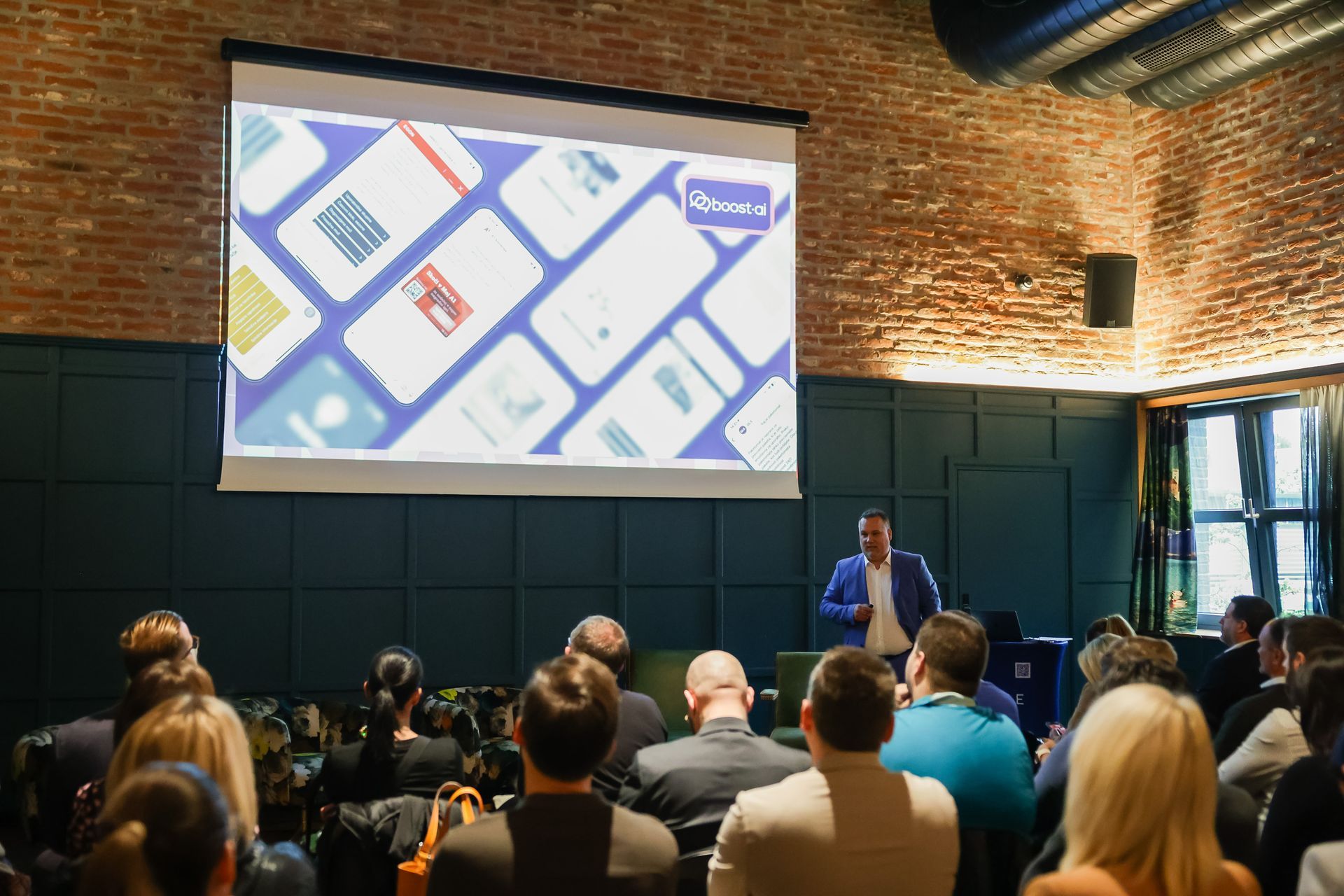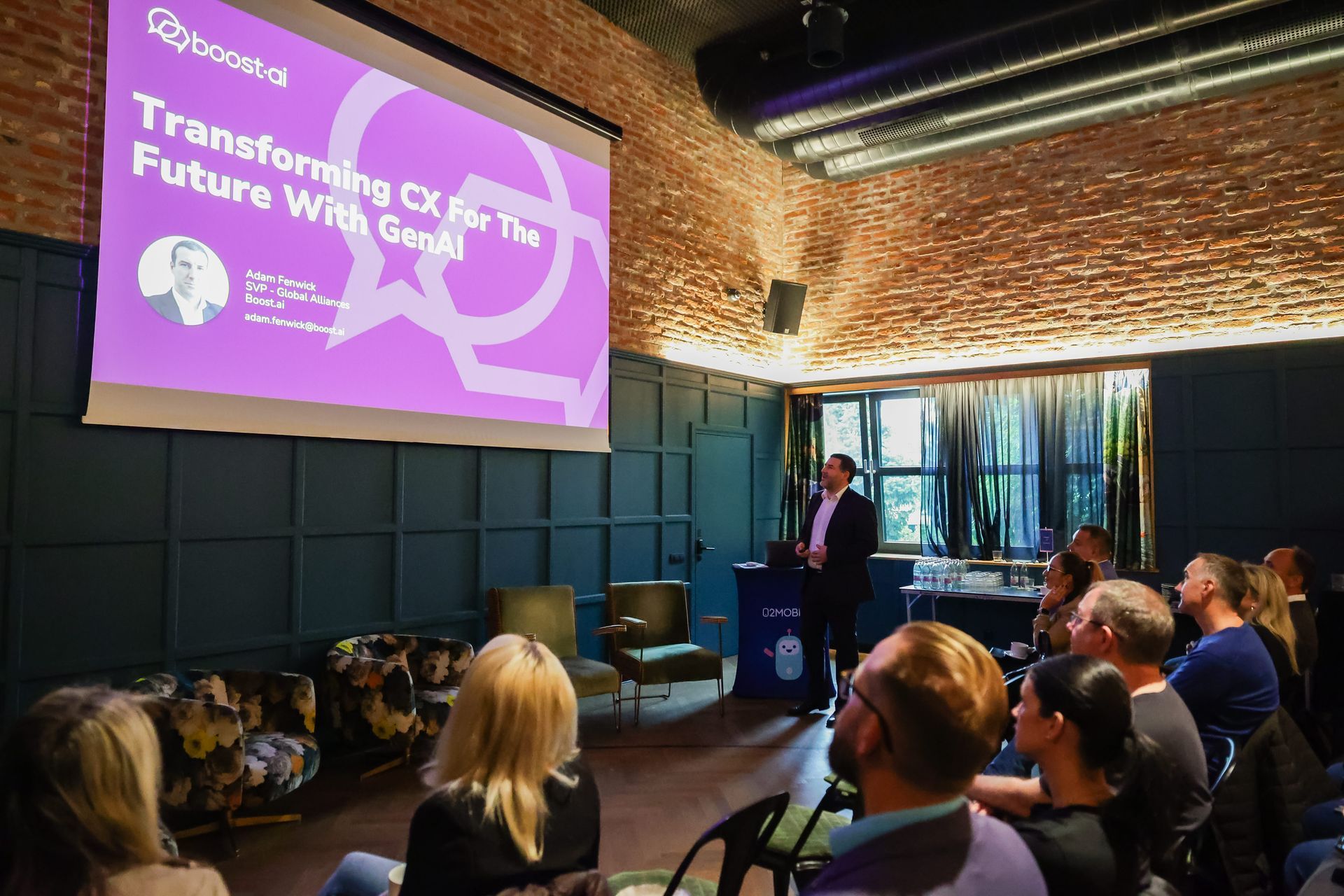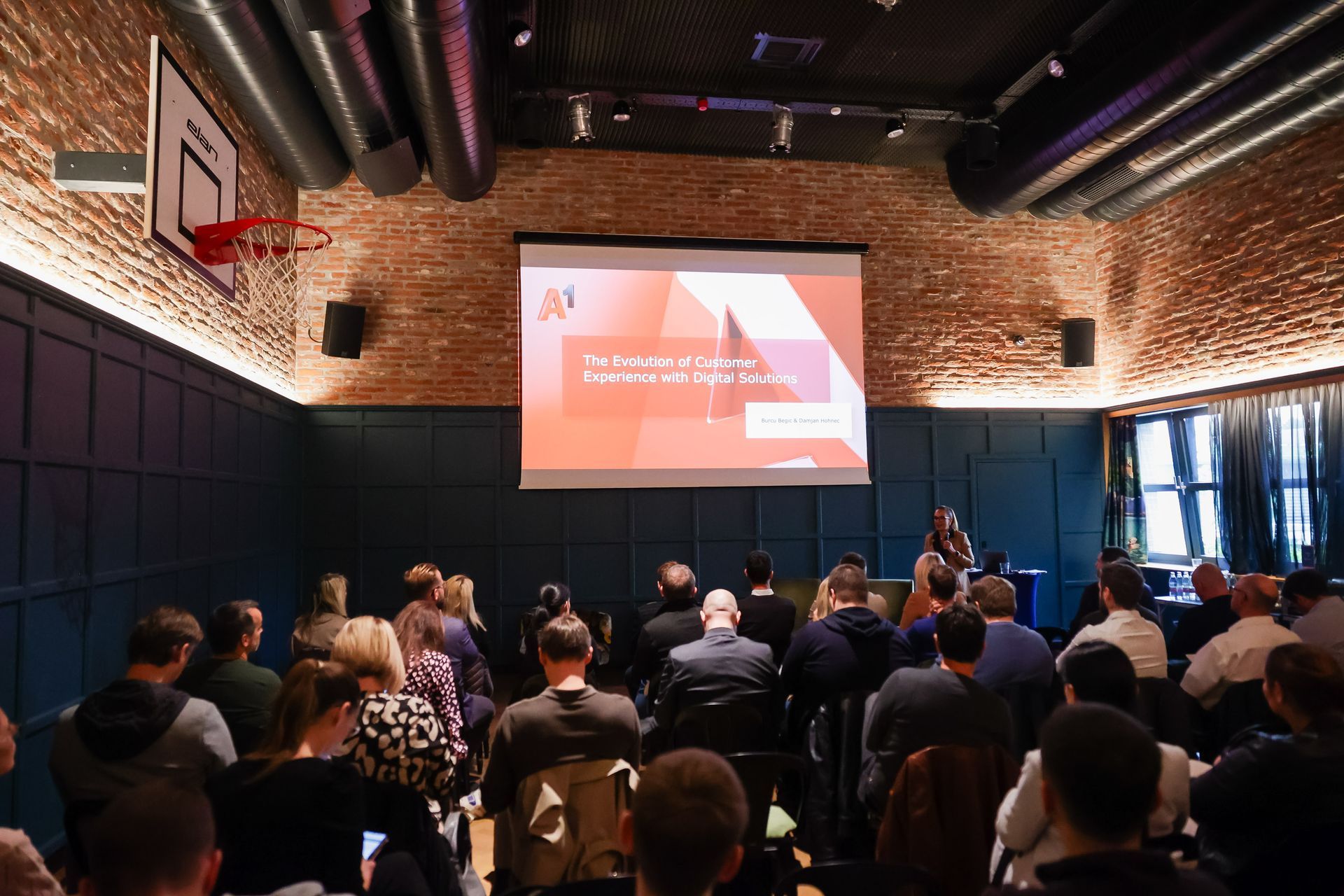Hybrid models integrating AI into business will be key to increasing competitiveness
At the event Virtual Agents: When AI meets human, we highlighted the advances in using AI for consumer experience design and customer support. By automating routine tasks AI delivers faster, more efficient and personalised services, boosting customer satisfaction.
The event, organized by 2Mobile and Boost.ai with support from A1 Slovenia, brought together experts to present trends and practical examples of virtual agent applications. Speakers included Matjaž Možina (2Mobile), Adam Fenwick (Boost.ai) and Burcu Begić (A1). The event was rounded off with a panel discussion where representatives from A1 Slovenija, GLS Slovenija, Elektro Gorenjska and CME Adria, Pro Plus shared their experiences and results in implementing virtual agents. This post summarizes the key takeaways from the keynote lectures.

AI’s true added value lies in business process optimisation and improved user experiences
In his introductory lecture, Matjaž Možina from 2Mobile talked about the real added value of artificial intelligence in business operations. He emphasized that the virtual agents based on conversational assistants and natural language understanding (NLU) offer companies an opportunity to optimise processes, boost efficiency and improve overall performance. Rather than replacing human labour, virtual agents automate many processes and free employees to focus on strategically important tasks.
Many companies believe that implementing AI is a time-consuming and resource-intensive process, but nothing could be farther from the truth. With modern tools and well-planned strategies, an implementation can be completed in just a few weeks. AI complements the work of employees by handling routine tasks and allowing them more time for more critical tasks. Successful agent deployment requires a needs analysis, selecting the right partner, process evaluation and gradual roll-out of the solution. Možina emphasized that companies do not need to overhaul their infrastructure, as many AI solutions can be easily integrated with existing systems.
In the coming years, Možina foresees the dominance of hybrid models, where AI and humans work in harmony. Conversational assistants will become more advanced, capable of understanding context and supporting multi-channel communication. AI will act as a collaborator rather than a replacement, allowing a seamless transition between automated processes and human interaction.

Using generative AI to transform the user experience
In his talk, Adam Fenwick from Boost.ai highlighted how Generative Artificial Intelligence (GenAI) is reshaping user experience. He emphasized its potential to help businesses automate their processes in response to ever-increasing customer expectations.
Fenwick outlined the many challenges companies face when using AI, particularly conversational bots that are not properly customised or programmed. He gave examples of poorly functioning chatbots providing incorrect information or even using inappropriate language. These issues may cause companies to lose their customers’ trust, so robust control mechanisms are essential for AI implementations. Fenwick noted that Boost.ai uses deep learning to tailor next-generation virtual agents to a company’ specific needs, improving response accuracy.
Fenwick pointed to Nordea as an example of a best practice. Nordea’s virtual agents automated more than 75% of user interactions in six different languages. He also showcased a project at Helsinki University Hospital, where AI was used to help manage anxiety and depression, easing the workload of medical staff and increasing patient satisfaction.
Fenwick envisions the future of AI as based on the ability to refine or “fine-tune” models, allowing them to adapt to language and industry requirements and improve the accuracy of identifying customer needs. He also emphasized that successful virtual agent implementation requires the integration of security measures and transparency, making all interactions traceable.

A1 uses generative artificial intelligence to improve customer experience and call centre operations
Burcu Begić from A1 shared a practical example of AI use in the company's call centre. The LUMI project upgraded the original AIDA chatbot with a next-generation virtual agent powered by generative AI. The new version was designed to build on the user experience of the previous version of the bot by efficiently solving technical issues, providing advice on subscriber plans and assisting with device setup.
One of the key benefits highlighted by Burcu Begić is the integration of AI with live agents. LUMI efficiently handles issues that don’t require personalization, while more complex matters, such as contract changes or major technical issues, are escalated to human agents. This strategy allowed A1 to strike the perfect balance between automated service and human interaction, significantly improving customer satisfaction.
Ms. Begić also shared statistics that demonstrated the success of the project. LUMI processed 53.5% of all interactions, increasing the rate of cases resolved without the need for human intervention or without the involvement of an agent. This has improved operational efficiency, as the virtual agent allows for greater flexibility and responsiveness – essential in today's competitive environment.
One of the future upgrades planned by A1 is the introduction of a voice bot, which will allow customers to choose their preferred communication channels. Additionally, the company will continue to optimise the LUMI virtual agent to even better fit customers' needs and ensure a seamless user experience.

Automation and artificial intelligence as the key to success for support services
The key message from all three sessions is that the future of work in call centres, customer support, and similar fields lies in automation and the integration of AI technologies, especially to improve customer interactions. Introducing virtual agents in companies will be essential for increasing efficiency, lowering costs and enhancing the customer experience. However, the human element will remain indispensable in solving more complex problems and maintaining relationships. Hybrid solutions that combine virtual agents for routine tasks and human agents for more complex tasks will be vital for gaining a competitive advantage. Businesses that successfully integrate AI and human support will provide faster and better service and will become more competitive.

